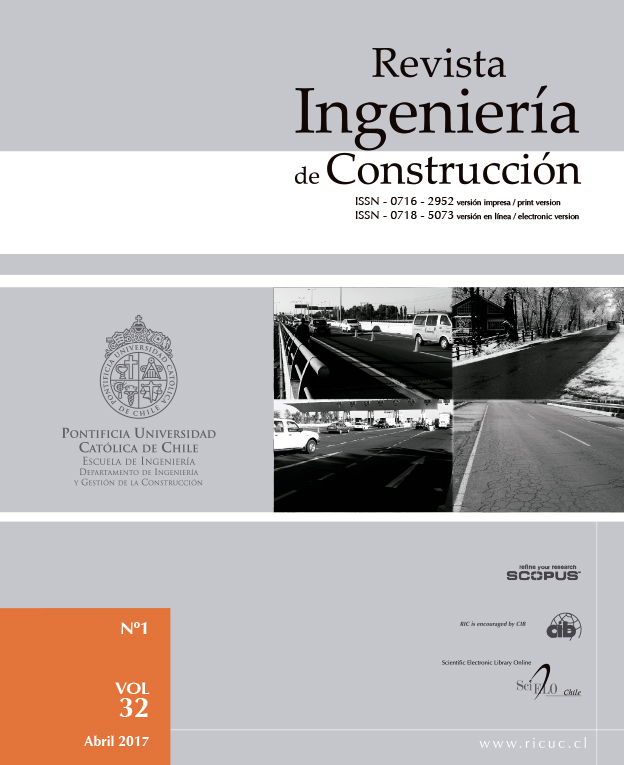Concepts for modeling road asset management systems using agent-based simulation
DOI:
https://doi.org/10.4067/S0718-50732017000100005Keywords:
Simulación, agentes, simulación basada en agentes, gestión de activos viales, riesgoAbstract
Complex emergent and adaptive systems raise modeling challenges that cannot always be faced through mathematical modeling. The agent-based simulation is a simulation technique of socio-technical systems that allows modeling the interactions among agents, thereby offering an emergent alternative to the development of road infrastructure management systems. Road infrastructure management is a socio-technical system similar to open and adaptive systems, because there is interaction among the agents (state, private and public); it needs to consider the variability through the risk inclusion and it induces externalities that modify the system’s initial conditions. This paper discusses the agent-based simulation and how it can be used for designing road asset management systems. Therefore, a generic model is proposed, based on the existing literature, in order to characterize the types of agents involved. A plan is also discussed to include the risks in the infrastructure asset management under the agent-based simulation system. It was concluded that this modeling approach allows incorporating the effect of the agents’ decisions on maintenance planning, and the same time it has enough flexibility to include other effects, such as uncertainty and risk, considering that an asset management system is an open socio-technical system and not necessarily a closed mechanistic system.


